Wow. Hard to believe I haven't posted anything on this build for a full year. After a very dramatic mishap with my Hawker Tempest build in 1/32 (more on that elsewhere), I turned to the Tamiya P-51 to work on something that was finely engineered to be less of a struggle and also held greater promise of a good result. In fact, it ended up being pretty challenging to get major work done, but well worth the effort. I think it is worth reflecting on how we usually call Tamiya kits "shake n bake", as if they don't really require real effort or modeling skill to put together. For me this has been one of the slowest and most difficult builds I have yet done. With all the detail and the precision fit required for all components, it positively demands great care. For example, getting all the engine parts and support structure to fit EXACTLY like their supposed to is no easy task. I had to do quite a bit of careful dry fitting and refitting to get things lined up and was constantly challenge in how to paint things so they would remain glueable and also not get marred in that process. In fact, I put this away partly because I was getting doubtful that I could get it all to work out.
Anyway, I returned to the build and finally finished much of the main assembly over the last two weeks, short of clear parts. In the end, I did most of the metal parts for the engine bay with Rub n Buff silver, which allowed me to get on with assembly without doing complicated metalizer airbrushing at every turn. The Rub n Buff-coated parts are also pretty durable, compared to other ways of metalizing them. I left some of the wheel well details to paint later as I needed to just get the thing together and all the fine bits were really slowing me down.
To get the working parts to operate correctly (mainly control surfaces), you have to study the instructions with manic care so that all the tiny metal parts are oriented correctly on assembly. Adding the ailerons and flaps to the wings has to be done in exactly the right order to avoid disaster ( in spite of all the time and care I took, I still did it wrong at first but managed to pry apart some glued parts to get it all to work).
Finally, even though this is a Tamiya superkit, there are still a few pesky seams to fill in the fuselage spine and supercharger intake parts, since so much is sandwiched inside when you close it all up. Filling and sanding has to be done with great care so as not to damage all the fine detail and also to avoid surface scratches that will show up so easily with a metal finish. Anyway, so far, so good.
-
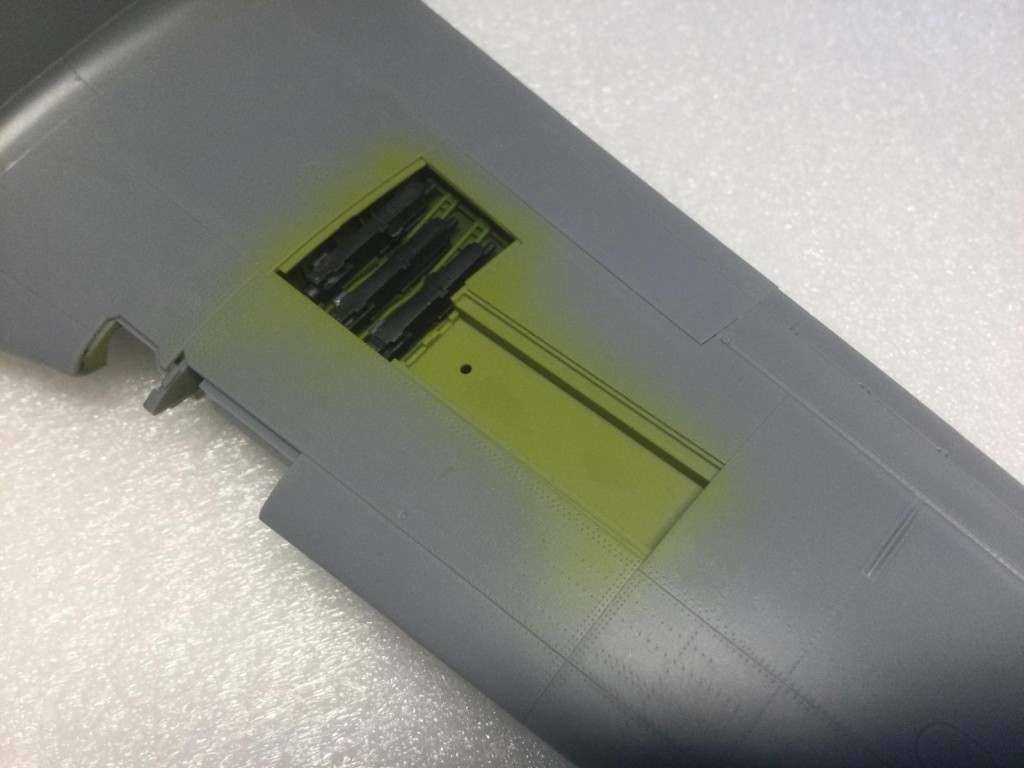
1. main bay for the guns is done on both sides.
2. I haven't added the ammunition belts yet. I have a pre-painted Edurd set for this which I might use to save time.
-
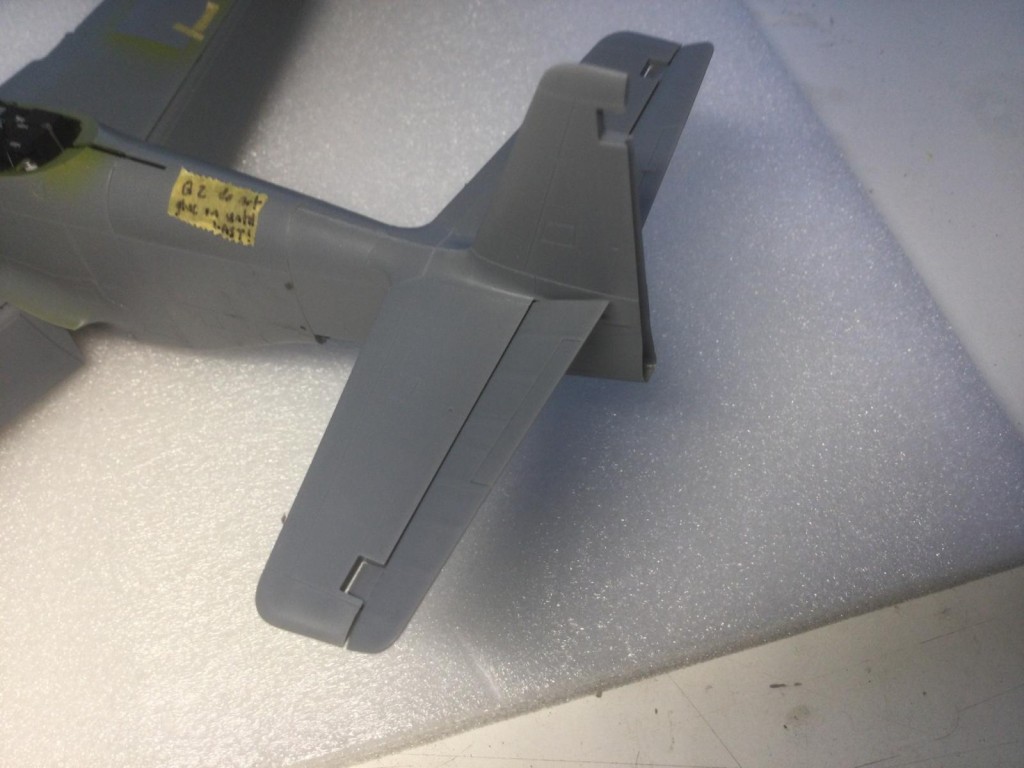
1. Pesky seam here filled with stretched sprue
So now I have the engine bay 95% done, with only a few magnets and final components to glue on. I tested the alignment of the access panels and found it all fits. Phew!
-
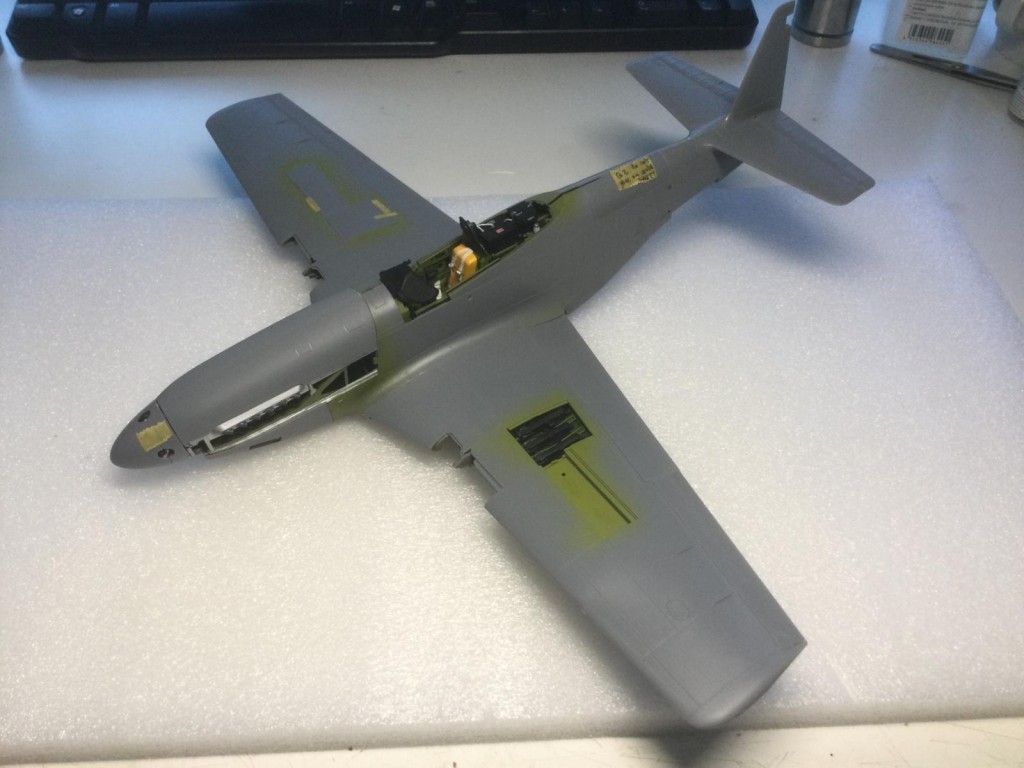
1. Top cowling fits beautifully.
-
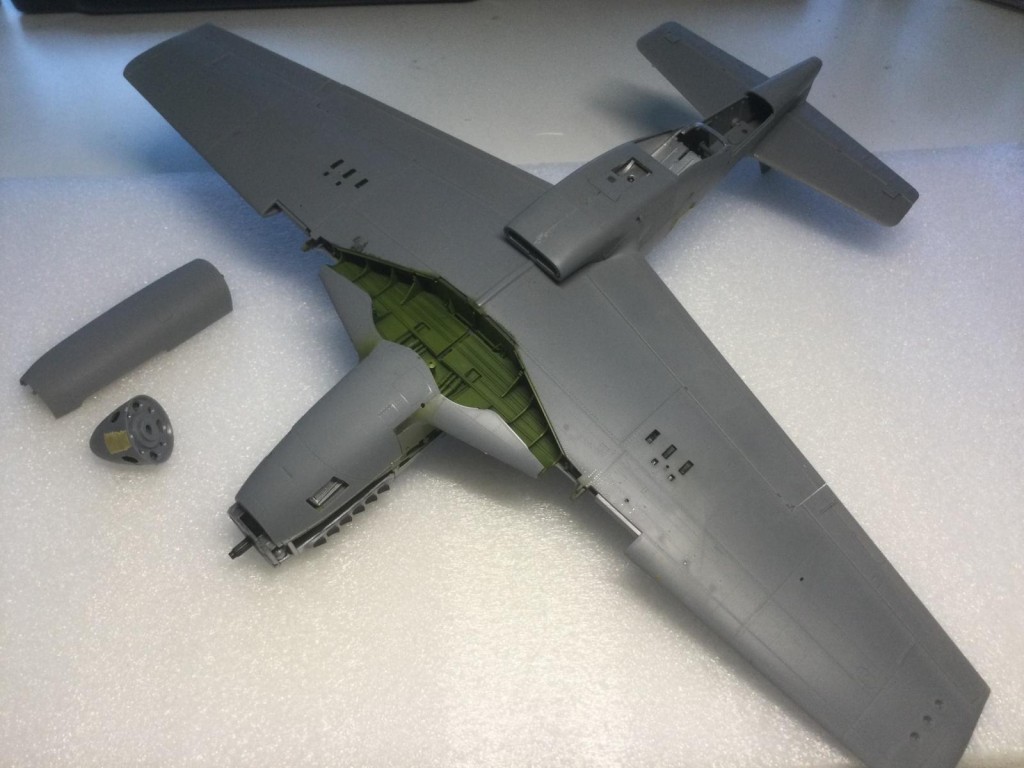
1. Bottom cowling fits well also in test fit.
I will proceed this week with sanding some tiny seams and smoothing out the surfaces. I did a tiny bit of preliminary painting on the underside because I knew it would be difficult to get proper coverage of primer and metalizer on the inside and underside of the supercharger intake.
-
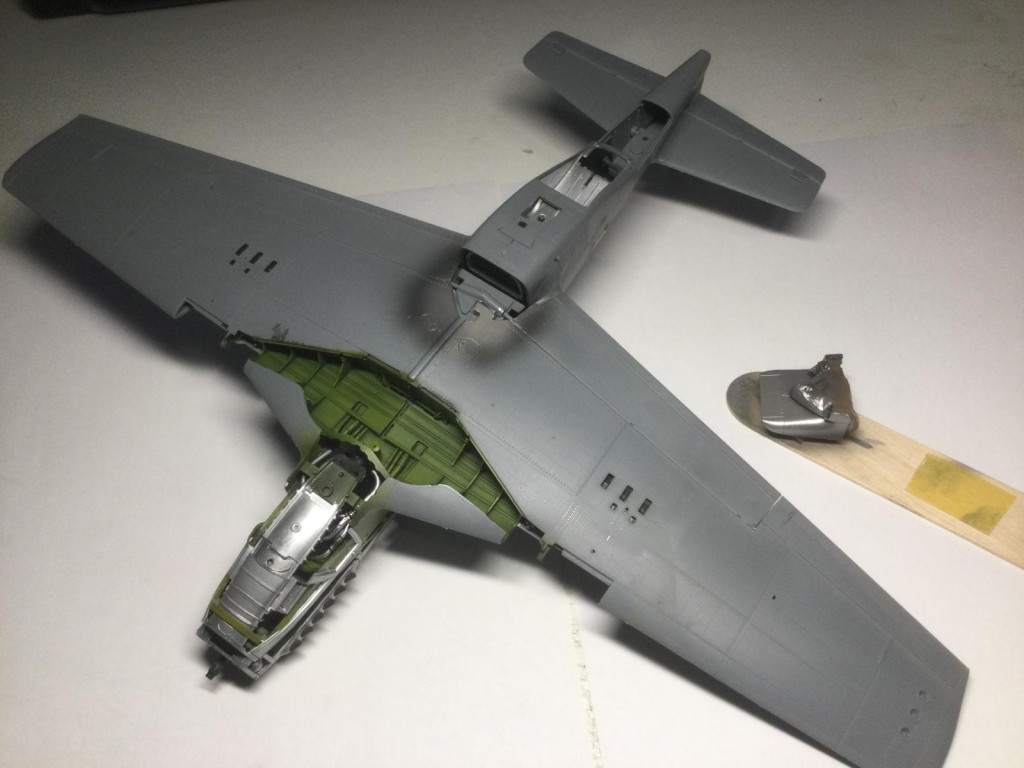
1. I Pre-painted the area under the supercharger intake because it is hard to reach to paint properly later.
2. pre-painted underneath the scoop as well
3. These pipes will need to be painted with Rub n Buff.
I hate getting puddling of paint when I am trying to spray around and underneath complex shapes. Pre-painting like this will save me that headache later.
Next stages are to paint and assemble the gun sight and the windscreen armored glass. This will allow me to add the clear parts and mask them for painting. I have some piping detail to paint in the wheel bay and will paint the landing gear parts for swappable magnetic fit.
I plan to do this as an early version of The Hun Hunter Texas, lacking the black panel/arrow, which seems never to have been actually painted with the aircraft's nickname as apparently intended (unlike the earlier P-51B version of the Hun Hunter). It's a handsome scheme partly in bare metal and partly in OD, with camo on the wings and top of the fuselage. Hope to get this one done soon. Keep watching!